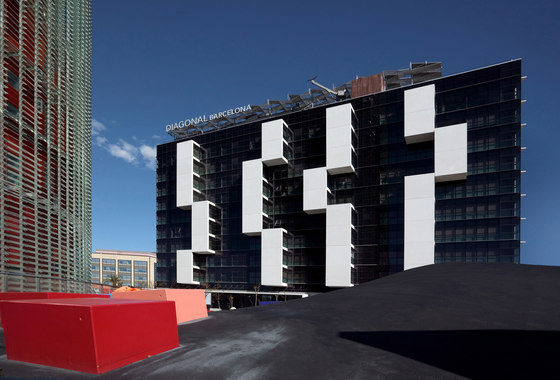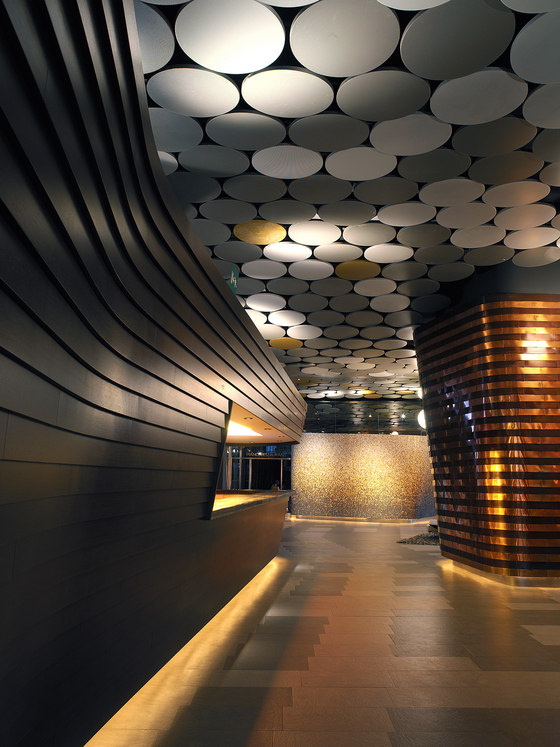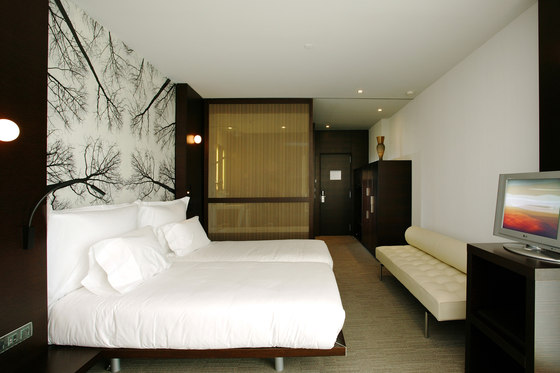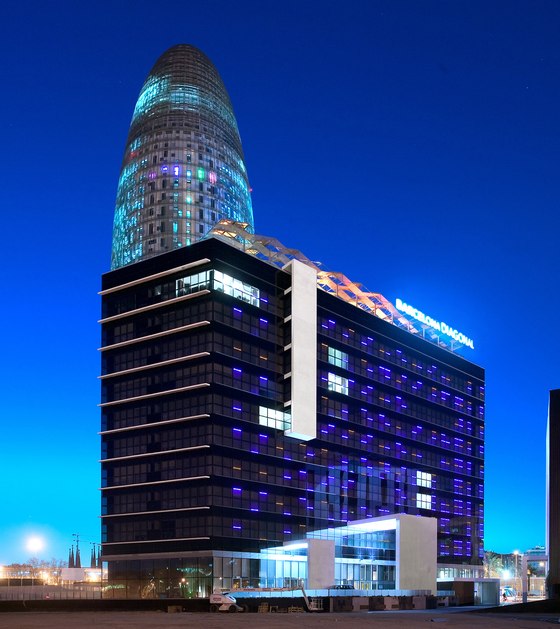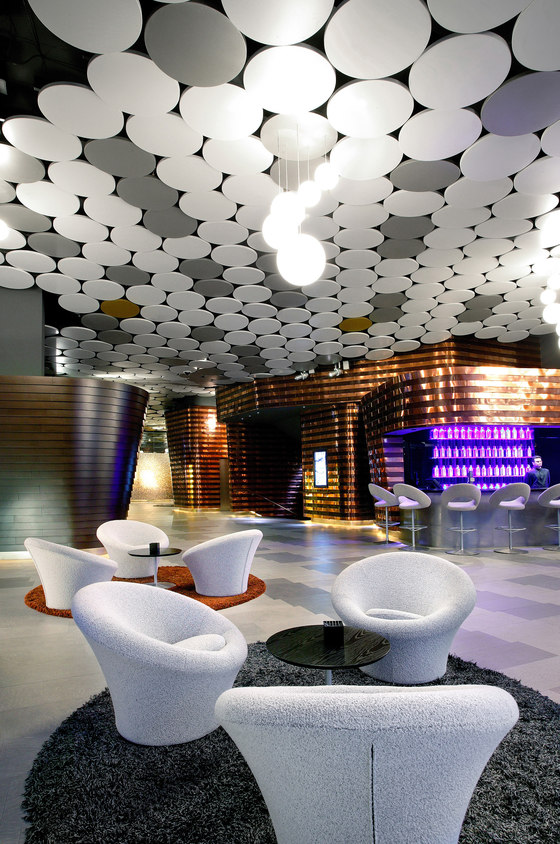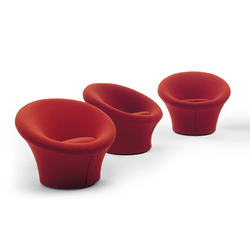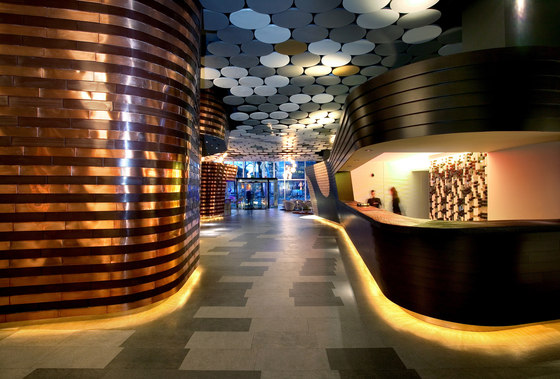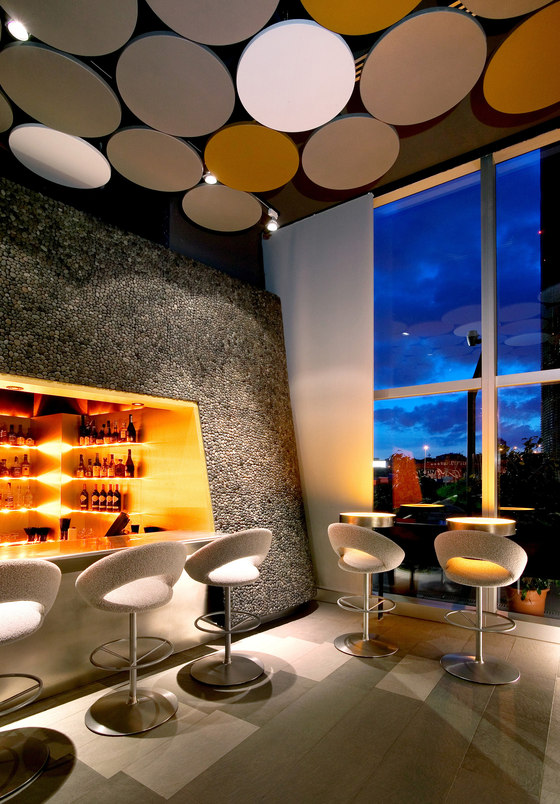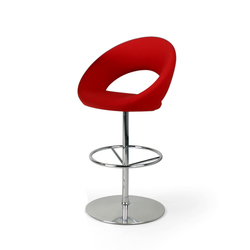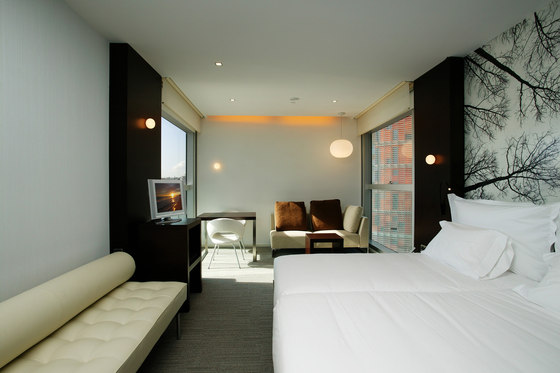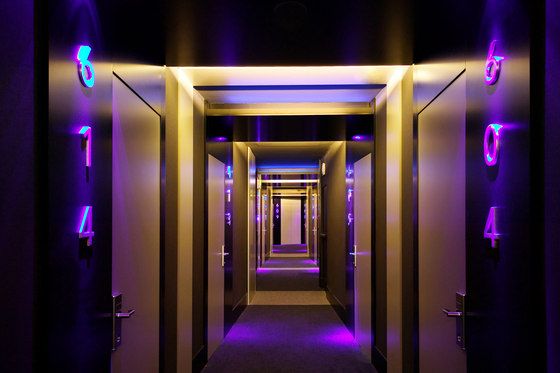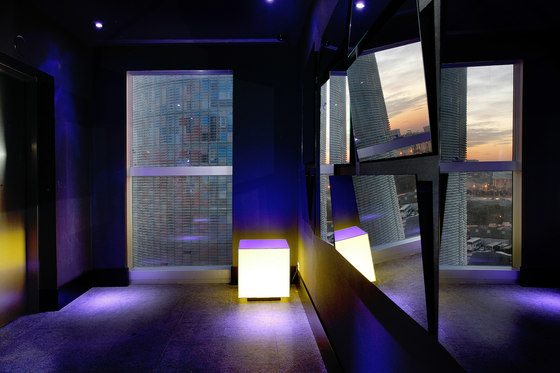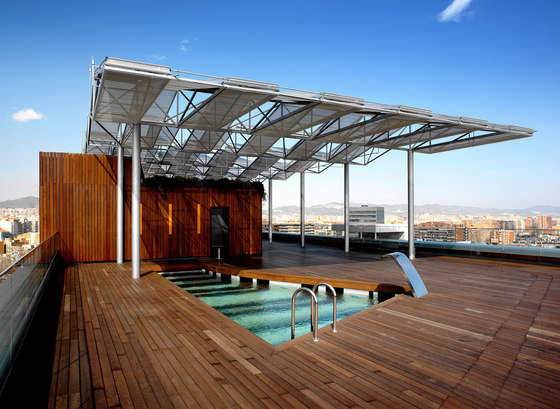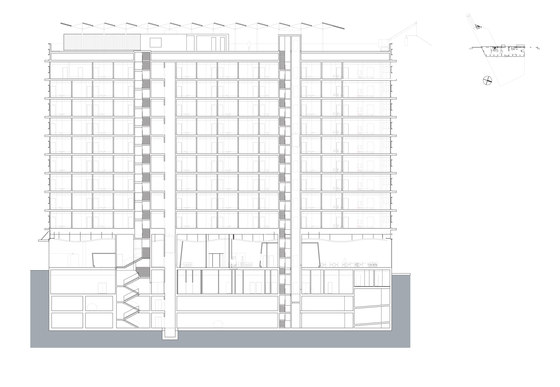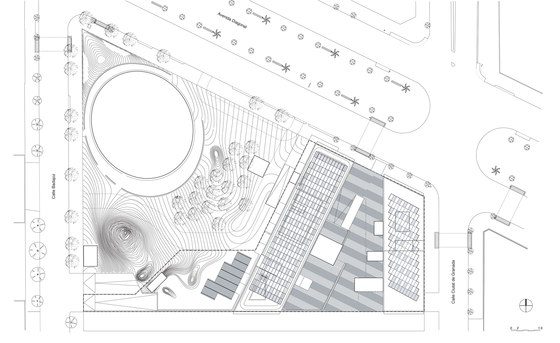DIAGONAL BARCELONA HOTEL
Black and white stave
The building constitutes a longitudinal prism, forming a screen, with vertical corbels on the façade which stand out like white keys on a black background. The ground floor emulates a great aquarium, with independent sections for the various uses, beneath an undulating ceiling of circumferences.
The skin of the building
From a vitreous prism, protrude a series of stone-like vertical corbels. The glass box has three degrees of opacity and a different tone of colour in each storey, a black opaque band covering the framework and installation-work; another serigraphed band, at the height of the railing offering visual protection from the inside, and another transparent band, at the height of the window which provides views and ventilation. These horizontal bands are reinforced by an aluminium bevelled edge delimiting each storey. On this homogeneous base, there are three types of façades: the frontal façades, the West façade looking onto the Agbar tower and the East façade looking onto an internal open square. The frontal façades are framed by white concrete plaques, outlining the framework to show the human scale, and signalling the number of storeys. The façade facing Jean Nouvel’s tower is made up of large 2.5-metre corbels stretching vertically across several storeys. The protusions are opaque at the front, but open at the sides. The corbels are set out like a composition on the horizontal lines of the storeys, like a musical score. The white glass-reinforced concrete pieces are harmonically superimposed on the black background, showing their volume and lateral width, like a superimposed layer.
The interior façade facing the square is, however, smooth, and has barely three volumes: one at the top, projecting outwards like a corbel, and two large eaves, also in white glass-reinforced concrete, sheltering the great scale of the building, providing it with a human scale and framing the entrance area of the hotel.
At night, the hotel shows two faces to the city, corresponding to each of its main façades; in one of them, the white keys gently reflect the projected beams of light, playing with the volumes, and in the other one, 300 low-consumption linear lights (LEDs), decreasing as they get further away from the Diagonal avenue, create an artistic play with the blue and amber, and, at the same time, provide a soft pilot light for the interior of the rooms.
The location
The hotel is located on the Diagonal avenue, the main artery of Barcelona, at the height of the Plaza de las Glorias, and shares its block with the office building Torre Agbar, designed by Jean Nouvel. Because it is impossible to stand next to this unique Tower and escape its influence, the Diagonal Barcelona Hotel project intends to become a background screen for the tower and to avoid any common terms of reference with the tower that might confuse them. Thus, while the tower is cylindrical and chromatic, the hotel is prismatic and its colour-scheme, black and white.
The ground floor interiors
The ground floor is inspired by a great aquarium. A glass box houses all the necessary services in organic, free and independent volumes. The undulating ceiling with circumferences is the water surface, and on the floor, like coral reefs, anemones, rocks and sea-shells... lie submerged a series of sections housing the reception area –depicting a sunken boat-: the vertical communications hub –depicting a coral reef; the toilets, bar area, etc. Each of these volumes is coated in different materials: copper, wood, glass mosaic, boulders, .. and adopts sinuous forms enveloping and containing the great pillars supporting the building.
The main hall is located in the Diagonal avenue entrance, with a sitting area and cocktail bar, but there are also two other entrances crossing the central area of the building, and allowing access from the Agbar tower square or from the interior square. This area houses the reception, with a waiting hall to attend visitors, and the lifts that go up to the bedrooms or down to the function rooms.
The rest of the ground floor is assigned to the restaurants. The toilet block separates the access into two areas: the Tecla cafeteria and the Piano restaurant. The former has a great self-service buffet and a bar. The restaurant is located at the other end of the ground floor of the building with regard to the main entrance, emphasizing its pointed shape, and offering exceptional panoramic 180º views of the future garden square.
The terrace
The hotel has a terrace with a restaurant-bar, accessible from the inside of the Piano restaurant, or directly from outside the hotel. The terrace has a light wicker roof structure, providing shelter and warmth, as a counterpoint to the great volume and height of the buildings surrounding it.
The rooms
The hotel has 240 rooms of different types, which can be divided mainly into two distinct models: glassed-in rooms with direct views, and rooms with “cubes”, that is, those with a space that projects outwards from the façade, forming the great white keys seen from the exterior. This space is used to add to the bedroom a small office space and sitting room, as a plus with regard to the standard rooms. The hotel also has 12 suites and 8 special rooms at the corners, with spectacular views.
The Panorama roof deck
The roof deck is on the 10th storey of the building, where the main hotel facilities are located, and has a great wood-lined terrace, with a solarium swimming pool, showers, and a cocktail and snack bar. You can walk on almost the entire surface of the roof deck, and take in the spectacular panoramic views of the city of Barcelona, and all its architectural and natural landmarks, from mount Tibidabo or Montjuic, to the sea, passing the towers of the Sagrada Familia Cathedral.
On the roof deck, standing out like a pergola, is a light, transparent, metal structure, with ninety solar panels that heat the water for the hotel. This way, they are integrated –not masked- into the harmony of the whole building, overcoming the need to find an independent, and often conflictive, location for this type of structure.
Grupo Urvasco, S.A.-Hoteles Silken, S.A.
Architecture: Capella Garcia Arquitectura S.L.
Architects: Juli Capella, Miquel Garcia
Interior design responsible: Lorelay Gazo, Pamela Könsgen
Project management: Pamela Könsgen, Lorelay Gazo, Joan Bozzo
Structural calculations: Obiol, Moya y Asociados, S.L.
Installation engineering: Celma Enginyeria Consulting 1300, S.L.
Site management: Tècnics-G3, S.L.
Quantity surveyor: Tècnics-G3, S.L.
Contractor: Dragados
